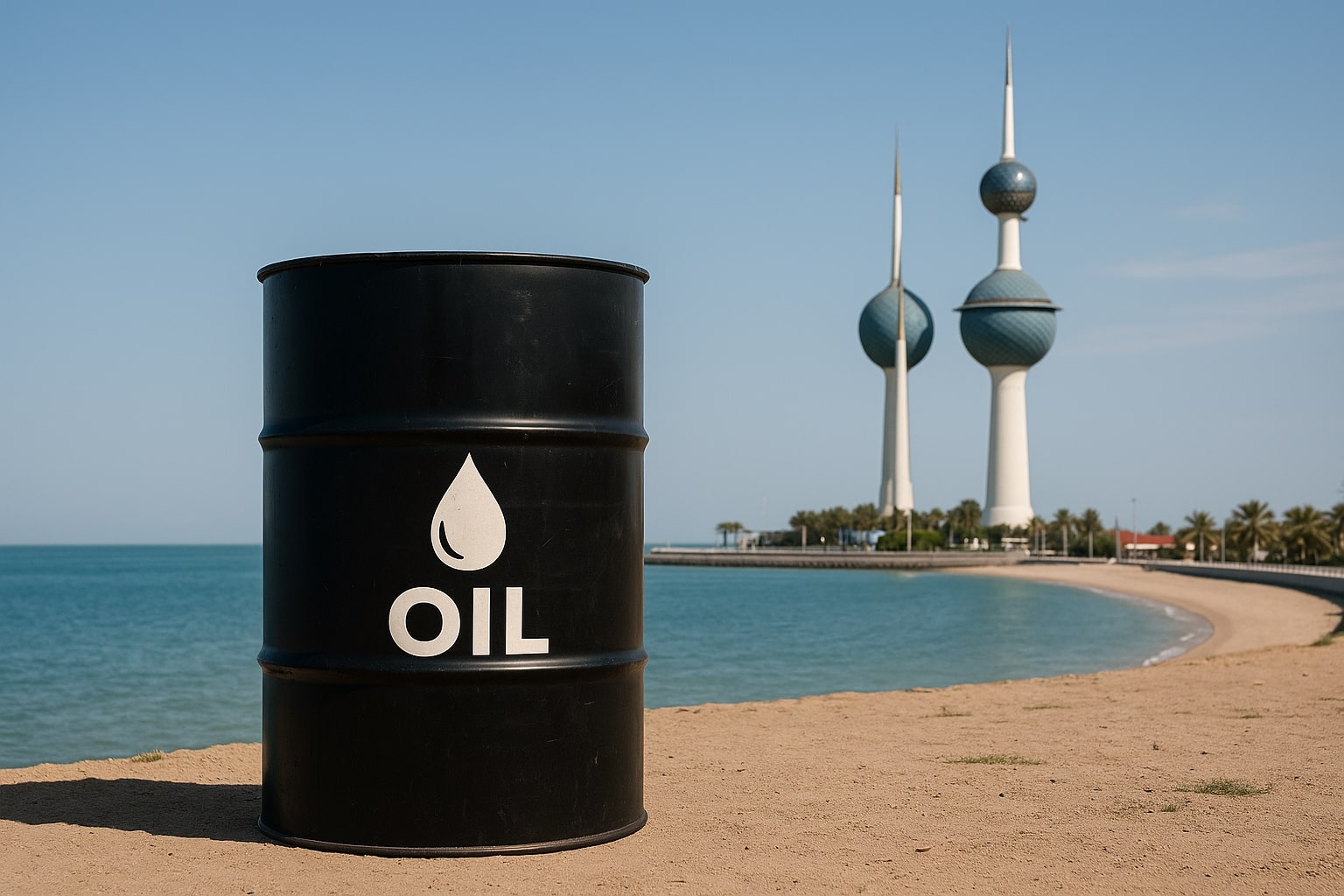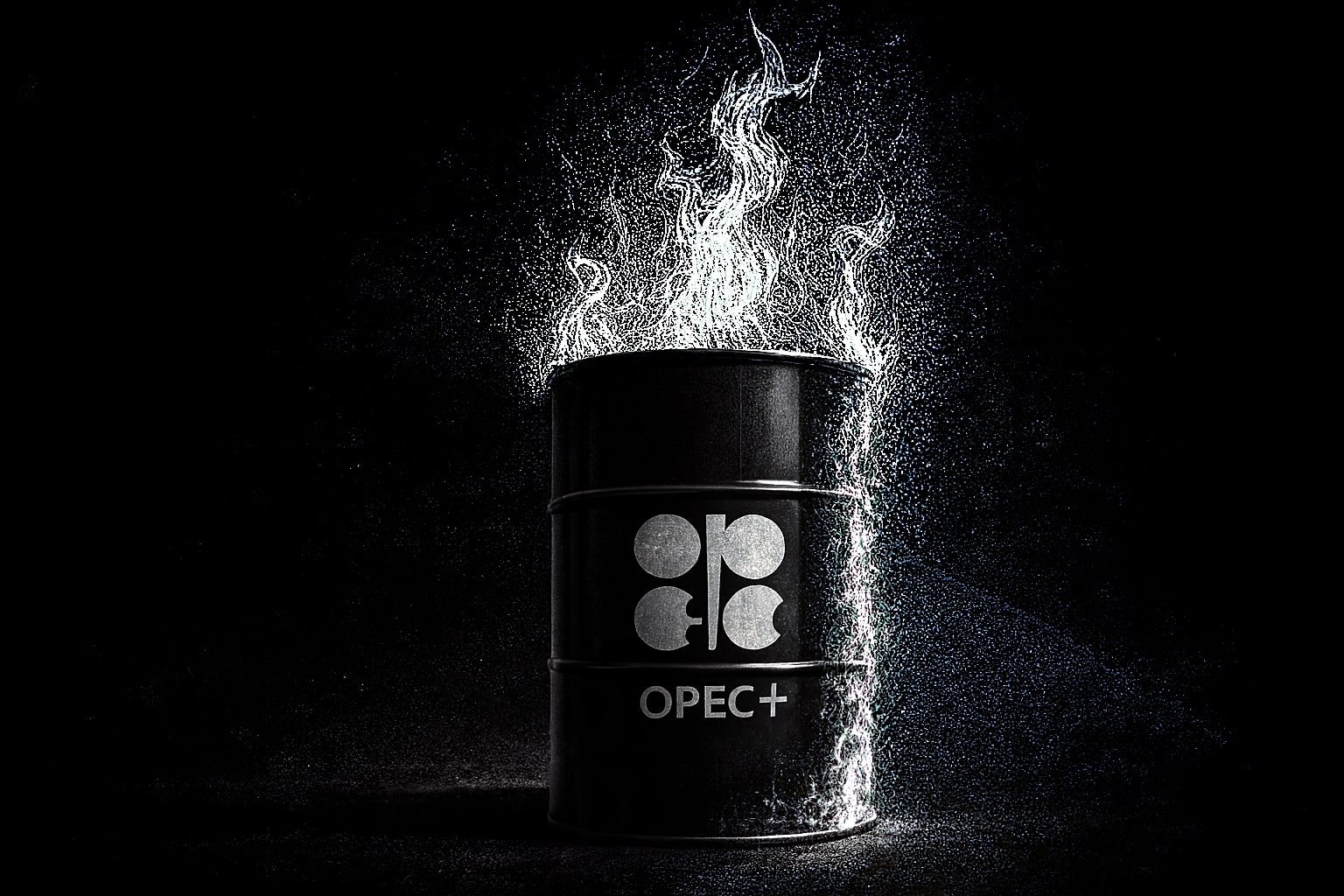Oil Price Forecast: Geopolitical Developments and Economic Uncertainty Shape the Future of Crude Markets
Kuwait’s Investment Strategy and Oil Production Plans
Kuwait, one of the key players in OPEC, has revealed an ambitious $50 billion plan to boost its oil production capacity over the next five years. With an annual investment of $9 to $10 billion, Kuwait aims to elevate its production from 2.415 million barrels per day (bpd) in April 2025 to 3 million bpd within the next five years, with further long-term goals to reach a production capacity of 4 million bpd by 2040. This massive investment comes amid a global backdrop of fluctuating oil prices, geopolitical uncertainties, and shifting energy demand dynamics. As the fifth-largest OPEC producer, behind Saudi Arabia, Iraq, Iran, and the UAE, Kuwait’s decision to increase its oil production capacity signals its readiness to compete on a global stage, especially as it aims to develop both its crude oil and natural gas sectors.
Kuwait’s commitment to enhancing its oil production is part of a broader strategic vision. The country aims to increase non-associated gas production to 2.0 BSCFD by 2040, reflecting its shift towards diversification beyond oil. In addition to its own reserves, Kuwait is also targeting production from the Partitioned Neutral Zone (PNZ), an area shared with Saudi Arabia that has become increasingly significant in regional oil production. This move is particularly noteworthy considering recent discoveries, such as the Al-Noukhitha offshore field, with an estimated 3.2 billion barrels of oil equivalent, positioning Kuwait for further growth.
Oil Prices Under Pressure Amid Geopolitical Tensions and Economic Challenges
Despite these aggressive investment plans, oil prices faced downward pressure as global market sentiment fluctuated. On Thursday, Brent crude fell over 2%, while West Texas Intermediate (WTI) also saw declines. The drop in oil prices came on the heels of reports suggesting that a potential U.S.-Iran nuclear deal could lead to an increase in global crude supply, adding more volatility to the already unstable energy markets. As the Brent crude price dipped to $64.64 per barrel and WTI crude settled around $61.72 per barrel, the global energy market faced renewed challenges. Geopolitical developments, such as the ongoing tensions between the U.S. and Iran, are further complicating the outlook for oil prices, with experts predicting that price movements will remain volatile in the short term.
Economic data, including U.S. producer prices that fell unexpectedly in April, coupled with mixed retail sales figures, have created a sense of caution in the markets. While some analysts point to the U.S.-China trade truce as a potential catalyst for a more stable oil market, the overall mood remains one of uncertainty. The International Energy Agency (IEA) has revised its oil demand growth forecasts downwards, now predicting a growth rate of just 650,000 bpd for the remainder of 2025, a significant slowdown from earlier predictions.
Strathcona's $4.25 Billion Bid for MEG Energy
In a sign of market consolidation, Strathcona has made a significant move to acquire MEG Energy for $4.25 billion in cash and stock, representing a 9.3% premium to MEG Energy’s closing price. The merger of these two companies would create a formidable presence in the oil sands sector, making Strathcona the fifth-largest oil company in Canada. The proposed deal highlights the ongoing transformation of the Canadian oil industry, with an emphasis on maximizing efficiency and scale in the face of fluctuating global oil prices.
Strathcona’s decision to refocus its strategy on the oil sands comes after the company sold off assets in the Montney formation for $2.84 billion. This shift marks a significant pivot towards securing long-term oil sands production, as both Strathcona and MEG Energy are major players in SAGD (steam-assisted gravity drainage) technology. The combination of these two companies would position Strathcona as a key player in Canada's oil market, potentially unlocking significant value through operational synergies and economies of scale.
India's Surge in Oil Demand and Its Impact on Global Markets
India’s rising oil demand is making waves in the global energy market. As the world’s fastest-growing major oil-consuming nation, India’s oil consumption is projected to rise by 3.4% in 2025, reaching 5.74 million bpd. This growth is expected to accelerate further in 2026, with demand anticipated to increase by 4.3% to 5.99 million bpd. India’s oil consumption is driven by strong economic growth, increasing manufacturing activity, and a surge in infrastructure projects, particularly in the transport and petrochemical sectors. The country’s import of crude oil surged to a record 5.4 million bpd in March, with Russia continuing to be the largest supplier, providing 36% of India’s crude oil.
As India continues to play a central role in global oil demand, its rapid growth is offsetting the slower pace of demand expansion seen in other regions, such as China. The U.S. Energy Information Administration (EIA) has already noted that India will account for 25% of global oil demand growth this year. This shift in energy consumption patterns underscores the importance of India as a crucial player in the global oil landscape, which could have significant implications for pricing and supply strategies.
Oil Price Forecast Amid Market Uncertainty
As of the latest market data, Brent crude and WTI crude are facing pressure from multiple fronts. Despite some bullish signals, particularly from India’s growing oil demand and Kuwait’s $50 billion investment in boosting its oil production capacity, the broader market remains fragile. Oil prices are currently capped by a combination of geopolitical risks and economic uncertainty. The IEA’s revised growth forecast for global oil demand suggests that the upside potential for oil prices may be limited in the short term.
Furthermore, the market is closely monitoring the potential effects of U.S.-Iran talks, with a possible nuclear deal raising the risk of an increase in global oil supply. As the price of Brent crude hovers around $64.64 per barrel and WTI trades near $61.72, the market remains in a consolidation phase, with key levels of support and resistance to watch closely.
In addition to geopolitical developments, the struggles of major oil producers like Saudi Aramco, which has slashed its dividend by 30%, reflect the financial pressures facing oil companies as they adjust to market volatility. The dividend cut is likely a preemptive move as the company braces for a potential increase in oil output, which could put further downward pressure on prices.
The macro outlook for oil remains uncertain, with global trade tensions, economic slowdown fears, and changing demand forecasts weighing on market sentiment. The forecast for oil prices in the near term suggests a bearish bias, particularly if key geopolitical events like the U.S.-Iran nuclear deal materialize and lead to an increase in supply.
Conclusion: Navigating Oil Price Volatility
Oil prices are currently in a fragile position, as global geopolitical and economic factors create uncertainty. While Kuwait’s investment in oil production and India’s demand growth offer positive long-term signals for the industry, short-term market dynamics—such as potential deals in the U.S.-Iran dispute and revised growth forecasts from the IEA—suggest a more cautious outlook. Brent crude and WTI crude will likely continue to face resistance at key levels, with potential for volatility as market participants adjust to changing economic conditions and geopolitical developments.




















